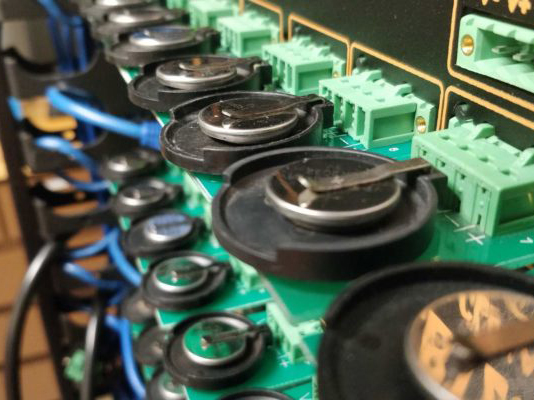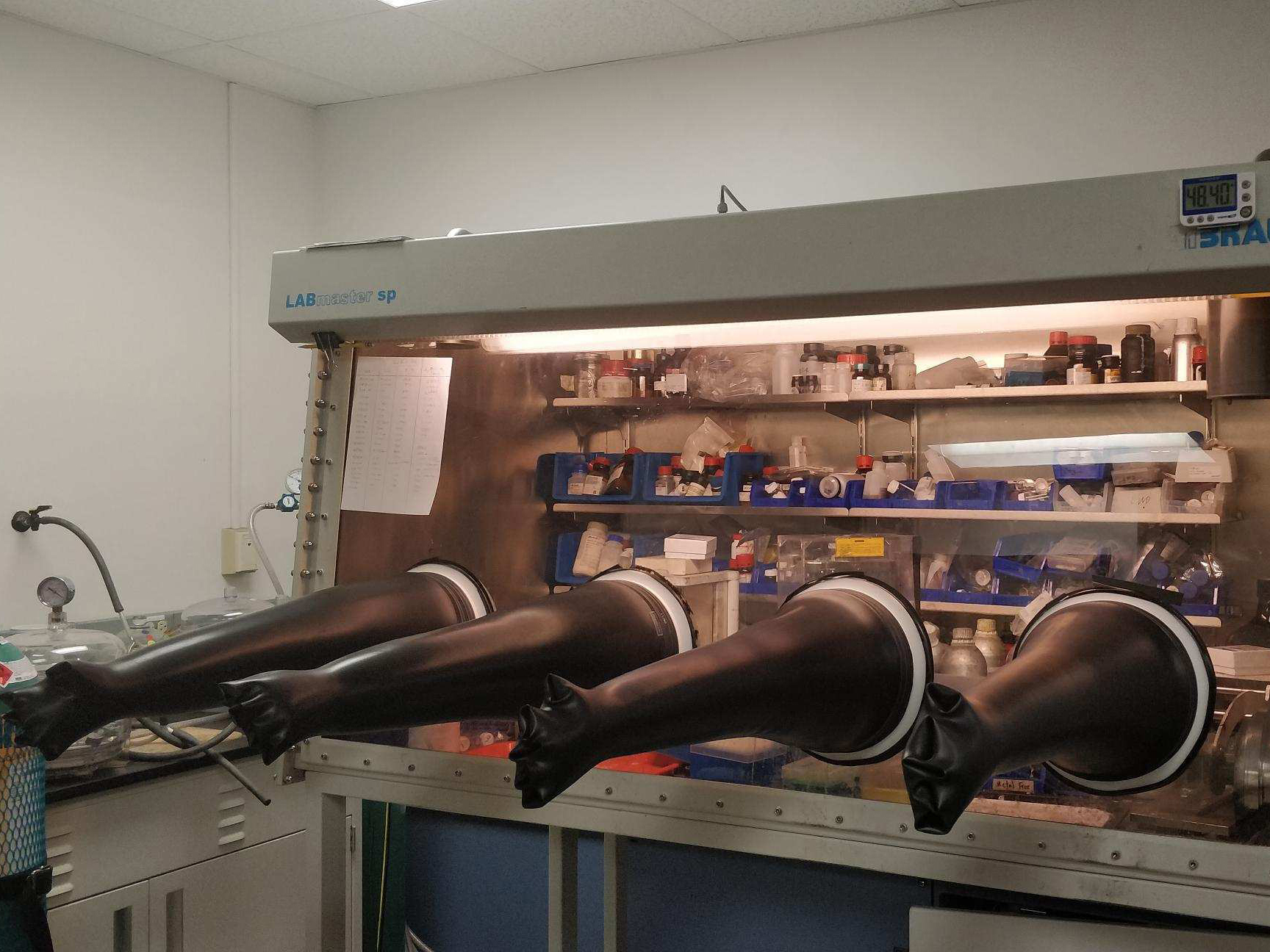This battery cycler in Arumugam’s Manthiram’s lab can test multiple coin cells at the same time.

Lithium-sulfur batteries have been hailed as the next big step in battery technology, promising significantly longer use for everything from cellphones to electric vehicles on a single charge, while being more environmentally sustainable to produce than current lithium-ion batteries. However, these batteries don’t last as long as their lithium-ion counterparts, degrading over time.
A group of researchers in the Cockrell School of Engineering at The University of Texas at Austin has found a way to stabilize one of the most challenging parts of lithium-sulfur batteries, bringing the technology closer to becoming commercially viable. The team’s findings, published today in Joule, show that creating an artificial layer containing tellurium, inside the battery in-situ, on top of lithium metal, can make it last four times longer.
“Sulfur is abundant and environmentally benign with no supply chain issues in the U.S.,” said Arumugam Manthiram, a professor of mechanical engineering and director of the Texas Materials Institute. “But there are engineering challenges. We’ve reduced a problem to extend the cycle life of these batteries.”
Lithium is a reactive element that tends to break down other elements around it. Every cycle of a lithium-sulfur battery — the process of charging and discharging it — can cause mossy, needle-like deposits to form on the lithium-metal anode, the negative electrode of the battery. This starts a reaction that can lead to the battery’s overall degradation.
The deposits break down the electrolyte that shuttles lithium ions back and forth. This can trap some of the lithium, keeping the electrode from delivering the full power necessary for the ultra-long use the technology promises. The reaction can also cause the battery to short-circuit and potentially catch fire.
The artificial layer formed on the lithium electrode protects the electrolyte from being degraded and reduces the mossy structures that trap lithium from forming during charges.
“The layer formed on lithium surface allows it to operate without breaking down the electrolyte, and that makes the battery last much longer,” said Amruth Bhargav, who, along with fellow graduate student Sanjay Nanda, co-authored the paper.

Manthiram added that this method can be applied to other lithium- and sodium-based batteries. The researchers have filed a provisional patent application for the technology.
“The stabilizing layer is formed by a simple in-situ process and requires no expensive or complicated pre-treatment or coating procedures on the lithium-metal anode,” Nanda said.
Solving the instability of this part of the battery is key to extending its cycle life and bringing about wider adoption. Manthiram said that lithium-sulfur batteries are currently best suited for devices that need lightweight batteries and can run for a long time on a single charge and don’t require a large number of charge cycles, such as drones. But they have the potential to play an important role in extending the range of electric vehicles and increased renewable energy adoption.
Both the positive and negative electrodes in lithium-sulfur batteries hold 10 times as much charge capacity as the materials used in today’s lithium-ion batteries, Manthiram said, which means they can deliver much more use out of a single charge. Sulfur is widely available as a byproduct from the oil and gas industry, making the batteries inexpensive to produce. Sulfur is also more environmentally friendly than the metal oxide materials used in lithium-ion batteries.
